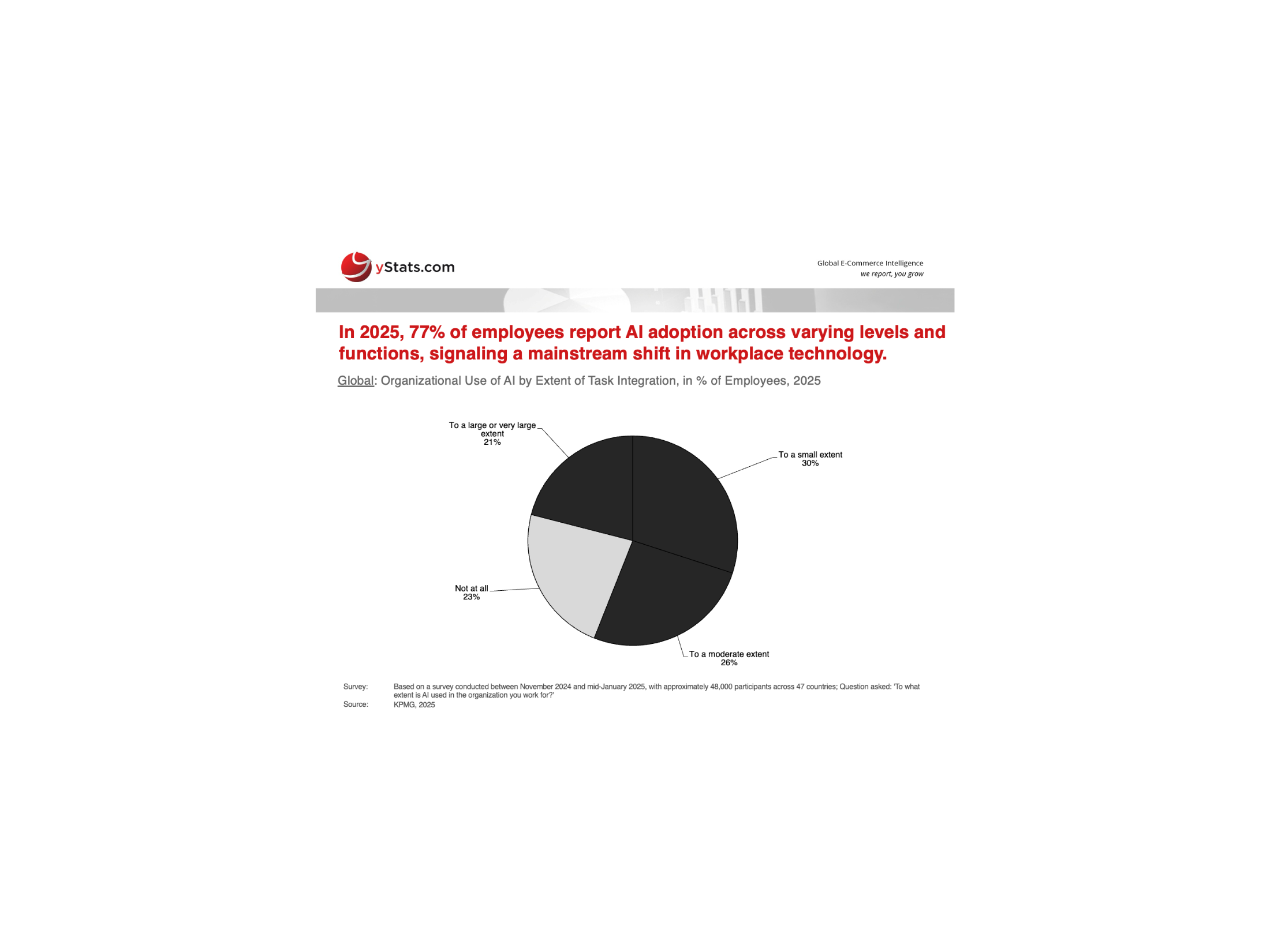Global E-Commerce and Payments in 2025: Adapting to Changing Consumers and Tech Advancements
In 2025, the global E-Commerce and payments sectors are undergoing fundamental change, shaped by evolving consumer habits, rapid technological progress, and shifting regulatory landscapes. Key drivers include B2C E-Commerce, digital payments, artificial intelligence (AI), blockchain, and B2B E-Commerce. While each segment faces unique regional and demographic influences, they are closely linked: cross-border trade drives payment innovation, AI reshapes fraud prevention and personalization, blockchain offers alternative transaction models, and B2B platforms transform procurement. Together, these trends illustrate the scale and interdependence of the transformation underway.

B2C E-Commerce: Expansion Powered by Mobile Adoption and Cross-Border Demand
Global retail E-Commerce sales are forecast to hit USD 6 trillion in 2024, as per eMarketer, with growth visible in both mature markets like the UK and Germany and in fast-rising economies such as India, Brazil, and Indonesia. This expansion is supported by improved logistics, mobile connectivity, and payment infrastructure.
Latin America maintains above-average growth due to better last-mile delivery and growing consumer comfort with online shopping. In Asia, China remains the largest E-Commerce market, while India ranks among the fastest-growing, supported by high smartphone penetration and government-backed payment initiatives.
Delivery costs remain a major pain point, over half of online shoppers cited high fees as their top frustration in 2024, according to DHL. Retailers offering free or low-cost shipping have an advantage, particularly in highly competitive markets.
Cross-border shopping remains strong, with over half of consumers buying from international sellers in 2024, especially in categories like apparel, electronics, and footwear. Shoppers are motivated by broader selection, competitive pricing, and access to exclusive brands. Social commerce continues to integrate into purchasing journeys, with over 35% of global shoppers using Facebook and over 25% using Instagram for shopping in 2024, as per DHL.
Digital Payments: Real-Time Settlement and Wallet Growth Reshape Transactions
Non-cash transactions are projected to surpass 2 trillion globally by 2028 according to Capgemini Research Institute, supported by expanded banking access, mobile-first solutions, and merchant adoption. Instant payments are expected to represent over 20% of all transactions by then, catering to sectors like retail, transit, and P2P transfers.
Cards remain the leading online payment method in 2024, followed by digital wallets. While card dominance persists in developed markets, wallets are rapidly expanding in Asia-Pacific, the Middle East, and parts of Africa. Globally, credit cards were accepted by over 75% of merchants, PayPal and bank transfers by around 70% as per State of Commerce, with wallets leading acceptance in Southeast Asia and contactless cards dominating in markets such as Australia and the UK.
Artificial Intelligence: Driving Commerce Innovation While Skills Lag
By 2025, over 75% of employees report using AI in the workplace according to KPMG, with applications ranging from customer service automation to predictive analytics and fraud detection. Generative AI enhances E-Commerce through conversational search, dynamic pricing, and automated categorization, while payments players deploy AI for identity checks, compliance automation, and behavioral risk scoring.
Yet, workforce readiness lags behind adoption, fewer than one-third of large companies and less than one-fifth of small firms offered role-specific AI training in 2024, as per McKinsey & Company. The AI in payments market is set to grow from over USD 8 billion in 2023 to about USD 60 billion by 2031, as per Allied Market Research, fueled by adoption in credit decisioning, KYC, and AI-powered customer support.
Blockchain and Cryptocurrency: From Retail Payments to Institutional Strategies
In 2023, more than 60% of consumers expressed interest in paying with digital currencies according to Gemini, with stronger adoption in regions with established exchanges. By mid-2024, most cryptocurrency owners were comfortable allocating significant portfolio shares to digital assets, with younger investors leading interest.
Institutional engagement is expanding, hedge funds increasingly hold digital assets, and spot Bitcoin ETFs have opened access to both crypto-focused and traditional investors. Tokenization is gaining traction, with under 15% of digital hedge funds invested in tokenized assets in 2024 but over 30% exploring them as per PwC. Stablecoins, used by nearly 80% of crypto-investing hedge funds, are valued for liquidity and volatility management.
B2B E-Commerce: Specialized Platforms and Secure Payments Lead
Global B2B E-Commerce GMV is on track to reach EUR 38 trillion by 2026 as per Edgar Dunn & Company, propelled by digitized procurement, niche marketplaces, and integrated payments. Buyer expectations are converging with B2C standards, prioritizing seamless transactions but still facing issues like incomplete product data.
From 2020–2023, vertical marketplaces received 90% of global B2B marketplace VC funding (Dealroom), targeting industry-specific needs such as compliance in healthcare or sourcing in manufacturing. Virtual cards, forecast to grow over 270% in B2B payments by 2028, according to Juniper Research, are being adopted for secure supplier payments, subscriptions, and travel expenses.
Global Outlook: A Converging Ecosystem
The 2025 landscape reflects how consumer expectations, technology, and infrastructure evolve together. B2C E-Commerce benefits from cross-border trade and social commerce; digital payments diversify through wallets and instant settlement; AI adoption advances but faces workforce challenges; blockchain expands from retail to institutional finance; and B2B E-Commerce strengthens through specialized platforms. Businesses that adapt quickly will be best positioned to compete in this interconnected future.


%20Sample%20Report%20-2.png)
